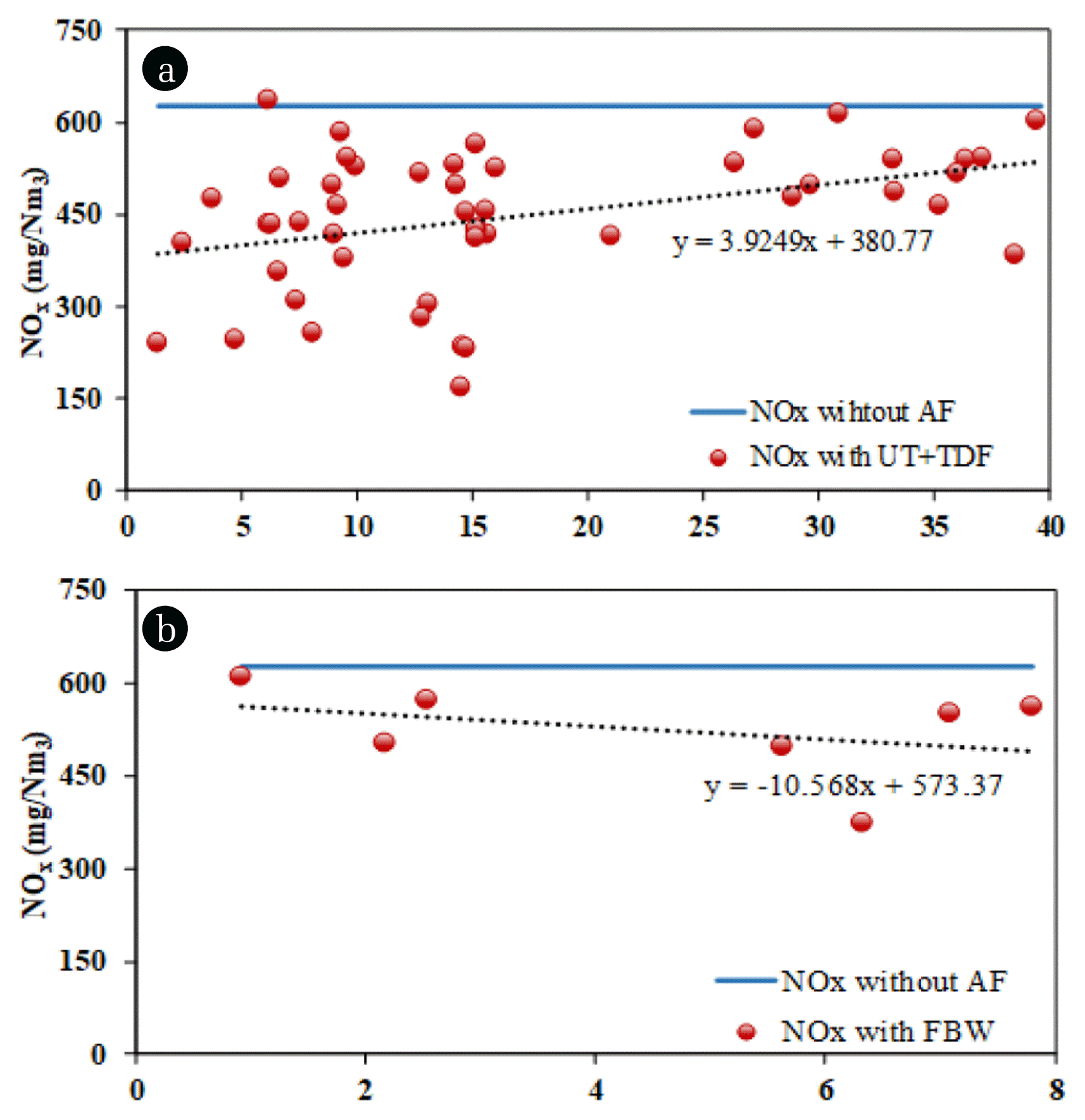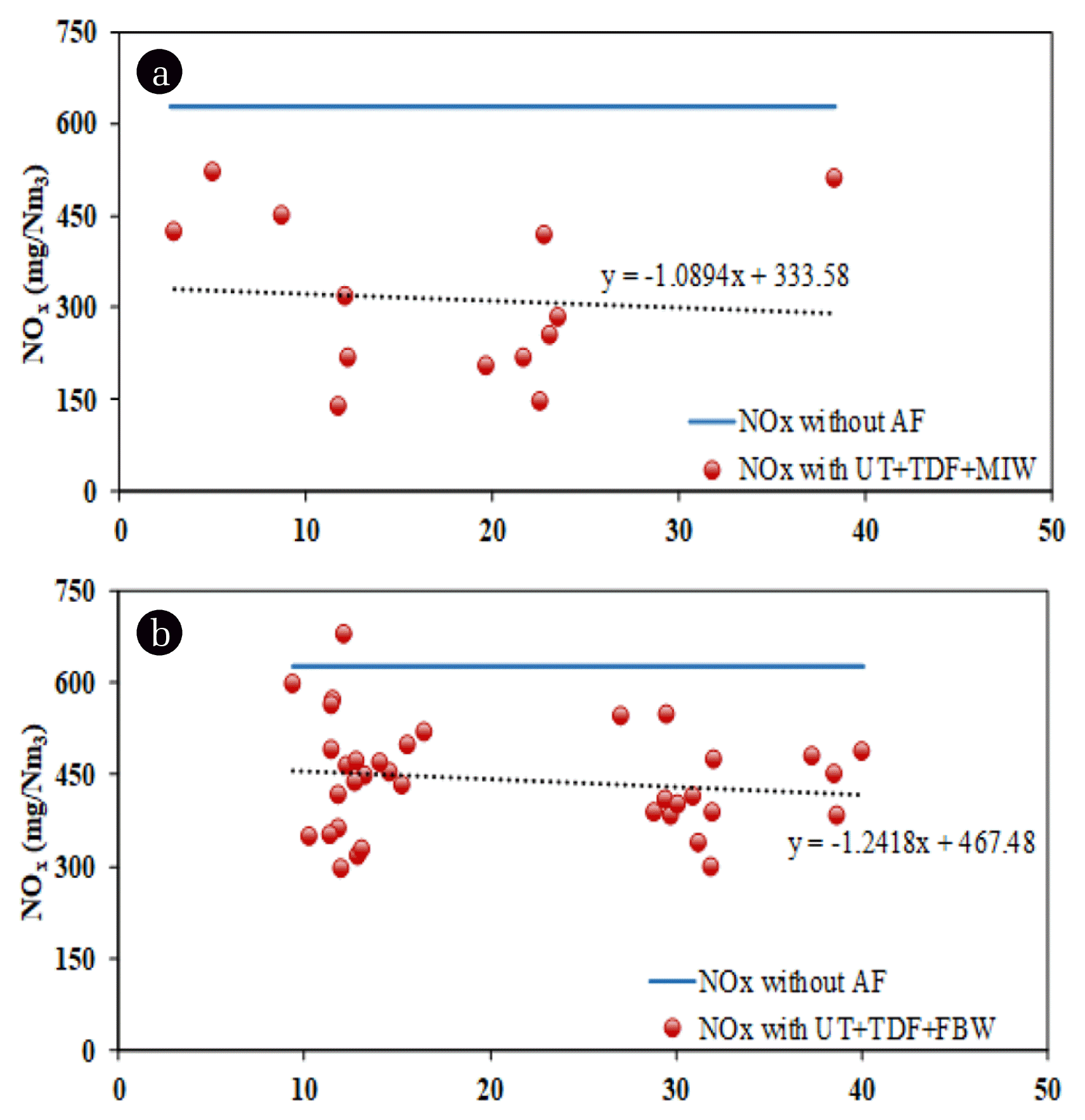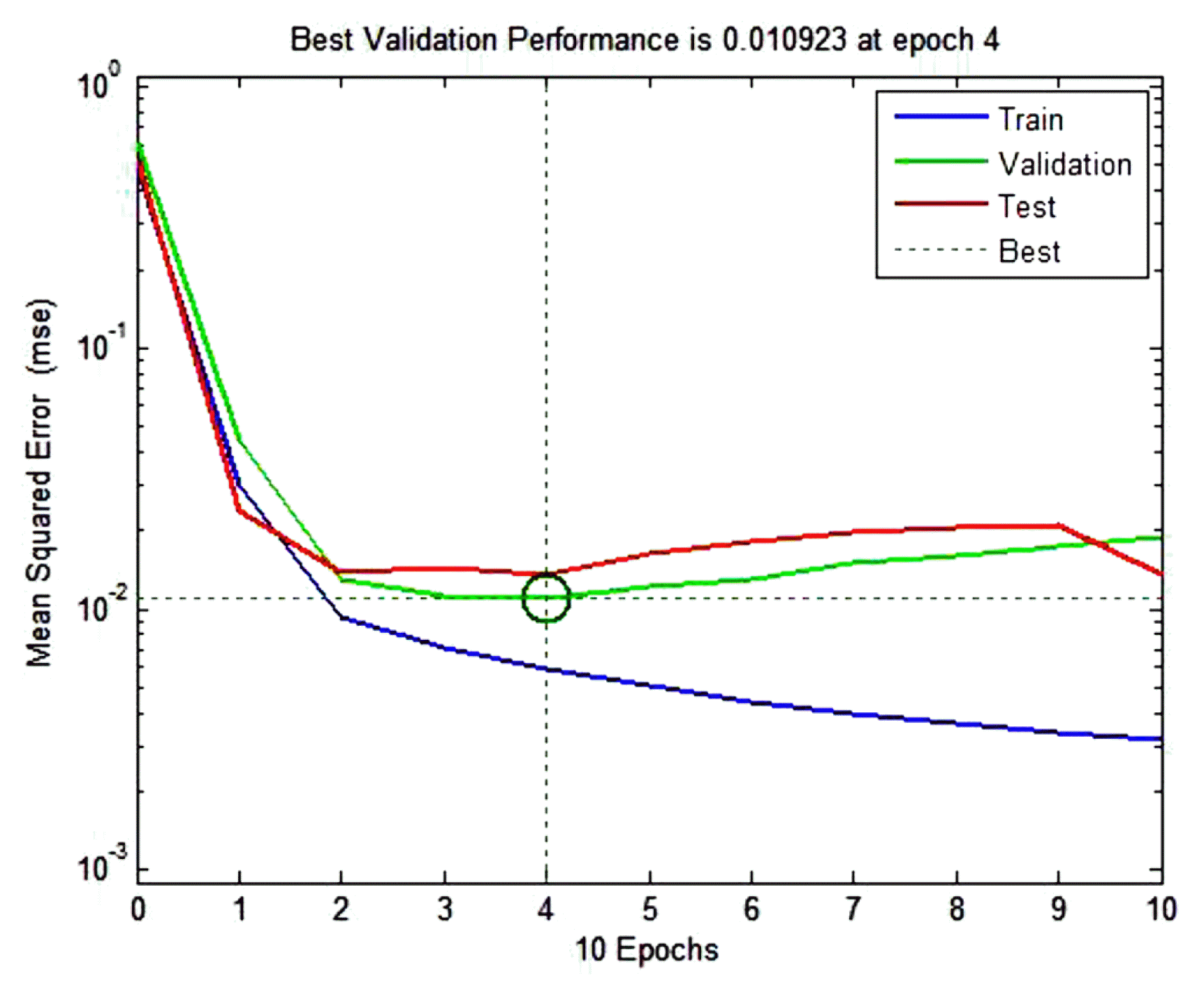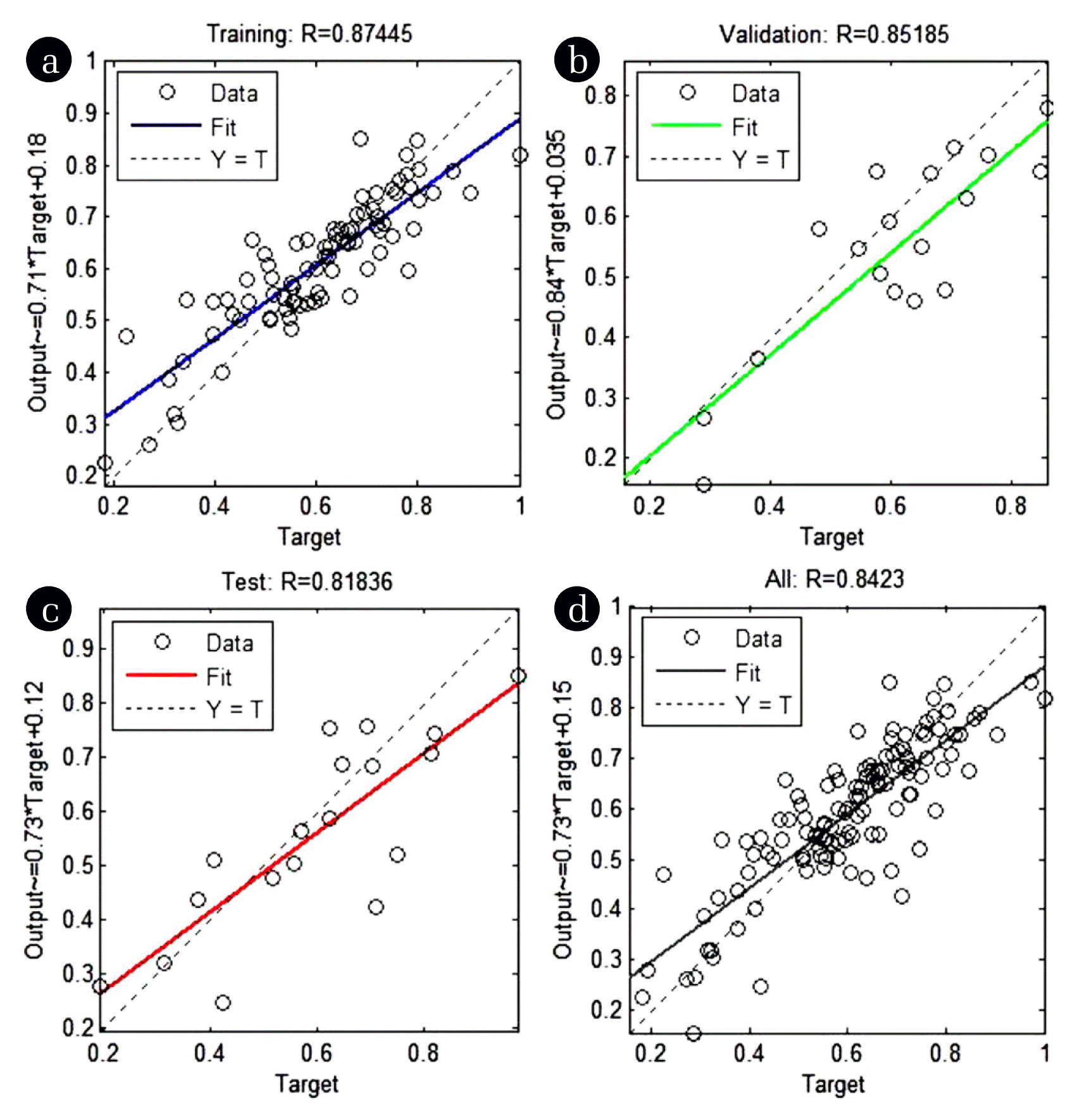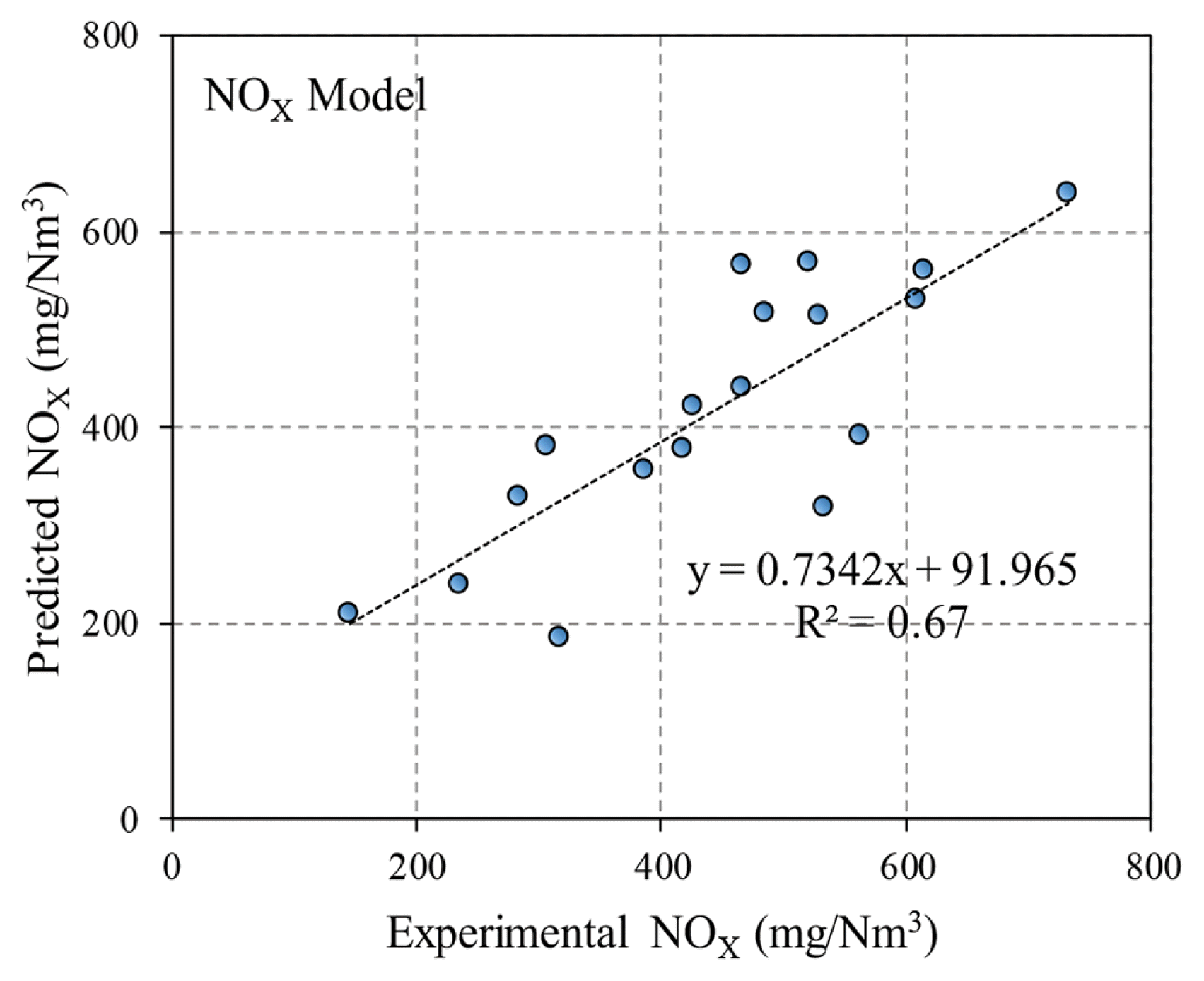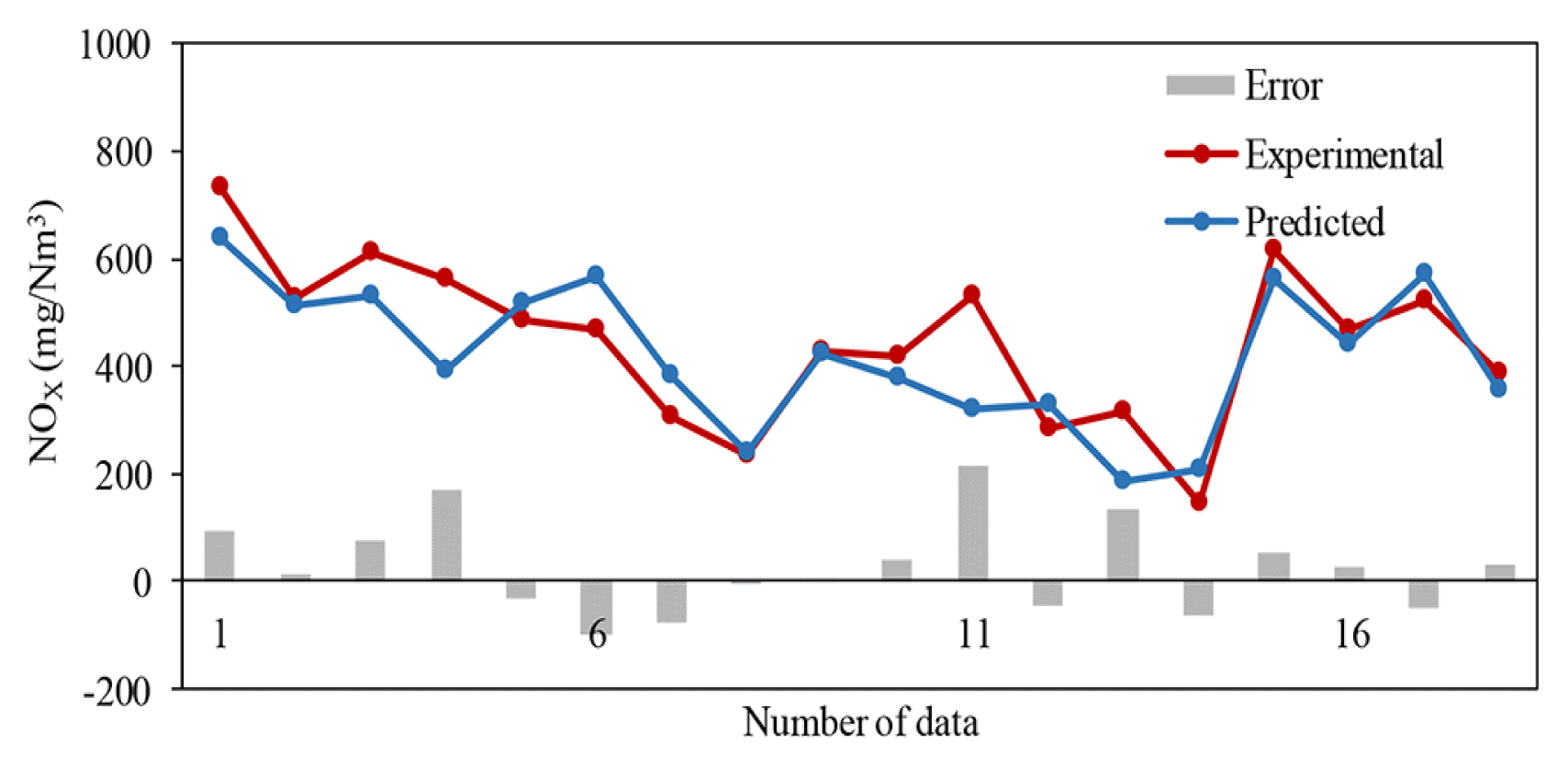1. Introduction
The cement industry is a sector with high energy and fuel use and approximately 15% of the energy consumed industrially is used by the cement industry. On average, 3.4 GJ of thermal energy and 110 kWh of electrical energy are used for the production of 1 (one) ton of cement in dry processes [1–4]. The cement sector causes the release of nitrogen oxide, sulfur oxide, dust, total organic carbon, hydrogen fluoride, hydrogen chloride, heavy metals, polyaromatic hydrocarbons, polychlorinated dibenzodioxins, and dibenzofurans into the atmosphere through the clinker production process [5, 6]. The cement industry is an energy-intensive industry and uses fossil-based fuels like petcoke, coal, natural gas, and fuel oil as primary fuels. Approximately 30–40% of the cement production costs can be considered as energy costs [7]. The most widely used fuel in the cement production in the world is coal and cement industry consumes approximately 120 kg of coal to produce one ton of cement as average. Approximately 4.2 billion tons of cement was produced in the world in 2018 (2.4 billion tons of was produced in China) and an average of 120 kg of coal or its equivalent fossil fuel is consumed for one ton of cement production, and the annual coal equivalent fossil fuel consumption for world cement production has been half-billion tons. The cement industry is not only obliged to manage fuel costs and energy costs but also faces increasing pressures to reduce the emissions it emits intensively, such as nitrogen oxides. Therefore, they aim to reduce their emissions by using waste as an alternative fuel in rotary kilns instead of fossil-based non-renewable resources as fuel [8, 9].
The use of alternative fuels in cement production has been taking place since the 1970s. While the global thermal substitution rate is 13%, some countries have individually reached 80% thermal substitution rates [10, 11]. In the European Union countries, the thermal substitution rates varied between 65% and 7% in 2014, while the average of the union was 41% [12]. The average thermal substitution rate of Turkey in 2018 was approximately 6% while it was 5% in 2017. In 2017 some plants reached about 30% [13, 14].
NOx emissions are one of the main pollutants released from the cement plant. The oxidizing environment required to produce cement is very favourable for NOx formation. Nitrogen gases called NOx contain nitrogen monoxide (NO) and nitrogen dioxide (NO2) gases by weight. In the cement industry, 90% of the NOx gases are nitrogen monoxide gas, which is a colourless, toxic gas, and the remaining part is nitrogen dioxide gas, which is a red-brown toxic gas. There are two combustion zones in a rotary kiln where NOx formation occurs. Since the flame temperature is within 1,200–1,600°C, a significant amount of NO formation is observed in the combustion zone that is called thermal NOx. The other formation of NOx is called combustion or fuel NOx. Fuel NOx formation occurs by the oxidation of nitrogen in the fuel. The reactions here are quite complex. Coal, natural gas, fuel oil, and alternative fuels are used as fuel in rotary kilns. Coal contains 1–3% nitrogen by weight, natural gas and fuel oil are fuels with lower nitrogen content. Also, alternative fuels may contain significant amounts of nitrogen [15, 16]. Reduction of NOx released from cement plants is an important pollution control strategy both in the control of air pollution and preventing harmful effects to human health [17]. Different methods like consuming waste as alternative fuels at rotary kilns are applied to reduce NOx emission from cement plants. However, NOx emissions are changed with the use of alternative fuels. Consuming different types of AF creates unpredictable changes in NOx emissions. Due to these changes plants have some difficulties in co-processing. Due to these difficulties, some studies have been conducted. While using alternative fuel, gas flow, kiln stoichiometry has been studied and it has been observed that alternative fuel changes kiln conditions under different scenarios [18]. In order to reduce the NOx emissions generated in the calciner, a laboratory-scale fluidized bed was created and trials were made and the efficiency of CaO, CO, and CO2 concentrations in reduction was examined [19]. The effects of rotary kiln gas composition on NOx and ammonia leakage on SNCR systems were investigated by rotary kiln simulation [20]. Considering the operational conditions of cement plants and only conventional fuel consumption, emission estimates were made with the help of the ASPEN Plus program and compared with the standards [15]. It has been studied to create a model with an artificial neural network for ammonia emission in the cement mixture made with fly ash from thermal power plants that reduce NOx by SNCR and SCR methods [21]. It has been observed that the studies have been conducted on NOx reduction do not involve the use of alternative fuels but focus on the efficiency of reduction systems. Since it is thought that predicting at what levels the NOx emissions will occur before the waste is fed may increase the alternative fuel usage rates in cement plants, it will allow operation by preserving the kiln conditions, it is thought that it will eliminate the need for an additional measure for NOx reduction, so it has been observed that it is necessary to study cement plant emissions with a prediction model.
The aim of this study is to estimate the NOx emissions by using artificial neural network modeling while the thermal substitution rate of alternative fuel changes. With the use of this model established with an artificial neural network, it is aimed to reach the highest level of waste usage and determine the waste mixture in the right proportions without experiencing problems in emission limit values. In this way, depending on the type and amount of waste to be used, it will be possible to preset the operating conditions of the kiln, so production can be made without sudden changes in operating conditions and without damaging the product quality. Knowing the emissions caused by waste mixtures and thermal substitution rates will facilitate kiln operation and prevent sudden emission releases. The estimation of the NOx emissions generated by different kiln conditions, at different mixing ratios, when different wastes are fed, will facilitate the selection and supply of waste, will allow the kiln conditions to be kept constant for the emissions to occur, and will eliminate the need for an additional reduction system, and thus will provide environmental and economic benefits. Since it was realized that no studies were carried out with waste and emissions in the rotary kilns of cement plants to estimate emissions, a study was conducted on the estimation of NOx emissions during waste usage to eliminate this deficiency found in the literature. In this way, it is planned that the use of alternative fuels, which the world is moving rapidly, will enable the reduction of fossil-based fuel use by determining the effects on the NOx emissions of the plants and to see the effects on air pollution with its possible contribution to the reduction of emissions.
2. Materials and Methods
2.1. Cement Production and AF Feeding Points
Cement is a hydraulic binder that can harden in water and air and then has a certain strength and volume, and its production takes place by firing and grinding natural raw materials such as clay and limestone at high temperatures. Other important inputs of production other than raw materials can be listed as electricity, conventional fuels such as coal, petroleum coke, fuel oil, natural gas, and secondary fuels grouped as end-of-life tires, fuel derived from waste, waste oils, waste sludge. Technical specifications of the cement plant were given in Table 1.
To use any type of waste as an alternative fuel in the cement industry, it is necessary to know the composition of the fuel. Generally, the priorities in fuel selection are cost and easy accessibility. In addition, physical properties such as calorie, ash content, moisture, toxicity (organic content, heavy metals), volatile content, density, size, and homogeneity are also important parameters. To use liquid, solid, coarse, or powdered wastes in the kiln, there should be flexible feeding systems. Waste can be fed from the kiln inlet, main burner, or pre-calciner.
2.2. Rotary Kiln
The study was carried out in an integrated cement plant with a preheater dry system kiln. The plant is a typical cement plant including crusher, raw material homogenization unit, raw meal mill where the raw materials are grinded and prepared to be fed into the kiln, rotary kiln where clinkerization or the combustion process takes place and emissions are released, waste storage and feeding system, cement mills, and packaging unit. Emissions in the study were received from the continuous emission measurement system (CEMs) connected to the main stack of the rotary kiln.
The rotary kiln on this study is 64 m long, 4.6 m in diameter, and with a clinker production capacity of 2,390 t/d. The cylindrical rotary kiln preheater tower consists of 4 steps cyclones. The rotary kiln rotates with a 3% inclination and a speed of 2.8 turns, allowing the raw meal entering the kiln to move downwards with its gravity. The rotary kiln’s highest thermal power is 94 MW. Both petcoke and steamcoal are used as the primary fuel in the rotary kiln but mainly petcoke is used in kiln. Fuel oil is used for ignition during the stoppage of the kiln. As alternative fuels, used tires in the whole form (UT), tire-derived fuel that is prepared by shredding of used tires (TDF), mixed industrial waste (MIW), fossil-based waste (FBW) are used. Alternative fuels can be used up to 39.9% of the thermal power of 94 MW in the rotary kiln. While the MIW, UT, and TDF are fed from the kiln inlet, FBW is fed to the kiln through the main burner.
2.3. Continuous Emission Monitoring System (CEMs)
The cement plant monitors the dust and gas emissions released into the atmosphere from the rotary kiln main stack through an uninterrupted online system. The data is transferred directly to the data monitoring system of the Ministry of Environment and Urbanization via online. Continuous emission monitoring system (CEMs) is an electronic equipment that enables continuous monitoring of emissions in the stack. Monitored parameters can be listed as CO, NOx, SO2, O2, gas velocity, moisture, TOC, HF, HCl parameters, and dust. Dust and gases emitted to the atmosphere are monitored and recorded with continuous measuring devices and a sampling line placed on the main chimney of 76 m length and 3 m diameter. Gas measurements are made with the extractive method by transmitting the gas samples taken with the help of a probe to the SICK MCS100 FT device via a heated line and then transferring them to the CEMs computer via software. Data based on this study were received from this device’s software which is closed to external intervention. The calibration process of online measurements (called Quality Assurance Level 2 “QAL2”) was carried out by an accredited measurement laboratory. The device is allowed to be calibrated only by an accredited laboratory that is assigned to calibration by the Ministry of Environment and Urbanization. Plants perform zero and span checks which are called quality assurance level 3 of the device. It is mandatory to perform the QAL3 test at least once a month to check the continuity of the current calibration function. Due to this rule, the QAL3 test was carried out and it was identified no need to repeat QAL2. QAL3 tests are performed via traceable gas volume defined as regulation about CEMs.
2.4. AF Feeding Program
This study was carried out by feeding different wastes to a preheater rotary kiln through the main burner and/or kiln inlet and monitoring the plant under real conditions in four months to create a NOx emission estimation model using the Artificial Neural Network. No waste feeding, single feeding, and/or mixed feeding of waste, feeding amounts, and mixing ratios were determined by the plant according to the wastes that are available and can be supplied. The kiln conditions and the emissions that were released into the atmosphere during the feeding of the wastes were monitored in real-time.
While the thermal substitution rate of alternative fuel varied in a wide range from 0% to 39%, the monitored 120-d NOx emission data was received directly from the continuous measurement device on the main stack and monitored without interfering with the actual conditions of the kiln. The transmission, recording, and evaluation of NOx data received from CEMs to the electronic data evaluation system have been in 10-s average values. The 10-s readings were recorded as minute, half-hour, and daily averages.
Data were recorded in all cases when the plant was operating at CEMs. Kiln was run all the days that data was obtained. The NOx data used in the study was applied and standardized on QAL2 over the Envidas software system owned by the plant. Inputs and outputs of ANN Modeling were received from the different reports of the plant. Some inputs of ANN such as FO, P, C, UT, TDF, MIW, FBW, KTP were received from the daily production report of the plant, PO2 was received from a kiln automation program called PLC. Tonnage information and NOx data were received from SICK MCS100 FT. However, data could be obtained from SICK in different intervals like an instant, 1 min, 30 min, 1 h, etc., the plant could not be obtained fuel consumption data as in these intervals. The plant has monitored alternative fuel consuming by stock and weighbridge measurement and wrote them into plant daily reports. Due to these time differences, it was decided to use the daily average of all inputs and output in the study.
2.5. ANN Application Procedure and Modelling
It is aimed to predict the NOx values obtained from the continuous emission measurement system by using ANN. Back-propagation (BP) is the most popular method used to train nonlinear, multi-layer ANNs for function approach and pattern classification [22]. Therefore, 3-layer BP neural network model was used in all networks modeled in this study. Network structure consists of 3 layers as input, hidden, and output layers. The sigmoid transfer (logsig) function was used in the hidden layer on each neuron and the linear function (purlin) was used for the output layer. The BP learning rule was used to minimize the weights and deviations of the network, the mean square error (MSE) between the obtained values, to solve the equations of the analytical model and those predicted from the neural network model. Levenberg-Marquardt (LM) algorithm was used as the training algorithm in networks. Input layers of networks fuel oil (FO), petcoke (P), coal (C), Used Tires (UT), Tire Derived Fuel (TDF), Mixed Industrial Waste (MIW), Fossil Based Waste (FBW), preheater O2 (PO2), kiln thermal power (KTP) and tonnage (T), in total 10 neurons. The parameters affecting the gas emissions released from the stack are fuels, types and thermal substitution rate of the wastes, and oxygen, therefore these parameters were chosen as inputs. A schematic diagram of the network is given in Fig. S1 in Supplementary Material.
All the fuels were expressed as thermal substitution rate as a percentage. Kiln thermal power was given in MW. Tonnage was raw feed tonnage and had a unit of t/h. Emissions were standardized values of mg/Nm3 (based on 10% oxygen) by applying the relevant calibration function on the continuous emission monitoring device. Thermal power of FO, P, C, UT, TDF, MIW, and FBW were calculated according to Eq. (1). While calculating TSR (thermal substitution rate), the calorific value of conventional and alternative fuel was taken into consideration. Fuel amount was considered as the dry basis.
Thermal substitution rate (TSR) of all fuels was calculated based on Eq. (2).
During the study, the number of days when alternative fuel was not used was only 10 out of 120 d. Alternative fuels were fed into the kiln through the main burner and/or kiln inlet. Alternative fuels could be listed as, UT, TDF, MIW, and FBW. UT and TDF were mainly used at the kiln as AF.
The network was designed as an input layer consisting of 10 neurons, a hidden layer of 23 neurons, and an output layer consisting of 1 neuron. The value of the hidden layer number that gives the minimum error was determined by the trial-and-error method by analyzing different networks with 15–25 neurons used in the hidden layer. 20 analyzes were performed for each neuron value and the minimum error was calculated by taking the average of the MSE values of these networks. Performance of network with different number of hidden layer neurons belonging to the NOx model is given in Fig. S2 in Supplementary Material. Since the minimum error is in the hidden layer network consisting of 23 neurons, the number of hidden layers for the NOx model was determined as 23.
A total of 120 data obtained from experimental data were used for ANN modeling to training, validation, and testing network. All data used in the modeling are given in the Table S1 in Supplementary Material. Statistical values of parameters used in modeling are given in Table 2. 84 randomly selected data out of 120 data were used for training and 18 data for validation. The remaining 18 data, which were never introduced to the network, were used for testing the network. The input and output data used should be given to the network in a certain format, considering the transfer function defined to the network. Since the sigmoidal transfer function is used in the network prepared in this study, the upper and lower limit values of the data should be taken as 1 and 0, respectively. It is of great importance that the data defined in the network are in the 0–1 range to ensure accurate and fast learning. In this study, normalization of the data was carried out by using the values obtained by dividing the data by its largest value. ANN analyzes were carried out using the MATLAB program.
3. Results and Discussions
3.1. NOx Emissions with Co-processing AF
NOx emissions used in this study were received from continuous emission monitoring device as daily average. AF consuming data while co-processing was obtained from plant daily report as total amount used in a day. All data were obtained while the plant was running. In this study, no laboratory data were used. The real condition of the kiln while co-processing was observed and all evaluation was made according to these real values. In this study, changes in kiln NOx emission values were observed while kiln run with no AF feeding, single type AF feeding, and AF mixture feeding at different substitution rates AF consuming. Results showed that kiln behavior changes with type and thermal substitution rate of AF. Also, it was determined that a higher substitution rate of AF has not provided a higher reduction in NOx emission. Investigated data prove that to decrease NOx emission at higher rate, AF type and substitution rate are important and they have to be determined as optimum.
During 120 days, only 10 days’ kiln was run without AF, and the NOx emission average of these days was calculated as 626.9 mg/Nm3. This value was used to compare values that were with AF. UT was consumed for 49 d, FBW was consumed 7 d as AF in the kiln, separately. NOx values of each day were received from CEMs and the average value was calculated to be able to compare with an average value of non-AF days. NOx emission average value was calculated as 446.4 mg/Nm3 for UT that means UT could provide a decrease at NOx emission as 29% and 524.3 mg/Nm3 NOx emission and 16% reduction for FBW. Wastes were fed to the kiln as separately as well they were fed as a mixture it can be listed as 2 days for UT+MIW+FBW, 13 days for UT+TDF+MIW, 36 days for UT+TDF+FBW, 2 days for FBW+MIW. NOx emission average values and reduction rates of these mixtures were calculated as 437,3 mg/Nm3, 30%; 314,47 mg/Nm3, 50%; 441,5 mg/Nm3, 30%; 559,2 mg/Nm3, 10%, respectively.
Fig. 1(a) and (b) show NOx emission with single-type AF co-processing. It can be seen from these graphs it is not possible to say that with higher AF rate provide a higher reduction in NOx emission.
Fig. 2(a) and (b) show NOx emission with mixture of AF co-processing. It can be seen from these graphs higher reduction at NOx was reached by consuming UT+TDF+MIW mixture.
Graphs show that between 12–14% thermal substitution rate of UT feeding, 38.7% reduction was reached at NOx emissions. When UT+TDF+FBW was fed into the kiln NOx emissions were decreased at a higher rate than a single use of UT+TDF. All NOx emission during co-processing occurred below NOx level occurred at kiln without co-processing. However, no linear relation was identified between thermal substitution rate, the mixture of AF, and decrease in NOx. Due to this nonlinearity and multiplicity of parameters, ANN modeling was decided to be applied to predict NOx.
3.2. Results of ANN
The performance values obtained from the analysis of the NOx model are shown in Fig. 3. As a result of the training of the network, the decrease in the MSE value from high to low values is an indicator that the learning of the network is successful. The figure shows 3 lines showing the performance of training, validation, and testing data. The training is completed when the MSE value of the network reaches 0.0109.
The graphics of the output results obtained for training, validation, and test data after the analysis of the network with normalized experimental data are given in Fig. 4. Regression values obtained from training, validation and test data were determined as 0.87, 0.85, and 0.82, respectively. The total regression value of the network was found to be 0.84. The graph of the experimental NOx values determined using 18 non-normalized test data and the NOx values estimated by the network are given in Fig. 5.
The graphic in Fig. 6 was prepared in order to determine the differences between the experimental and predicted values.
The coefficient of determination (R2), root mean square error (RMSE), and efficiency factor (Ef) were calculated to examine the closeness of the predicted results of the NOx ANN model with the experimental data. R2, RMSE, and Ef values were calculated using Eqs. (3), (4), and (5), respectively.
Here, N represents the number of data, P represents the estimated data value, E represents the experimental data value, the average of the experimental data. Statistical parameters obtained from the models are given in Table S2 in Supplementary Material. When the parameters in the table are examined, it is seen that the NOx value, which is very difficult to predict with linear equations and affected by too many variables, can be predicted approximately with low error margin with the artificial neural network model.
There are several factors affecting NOx formation and each factor has a different effect on NOx formation. It is difficult to define the appropriate formula to estimate the NOx emissions [23, 24]. Due to the non-linear characteristic of the relationship between operational parameters and NOx emissions, the ANN approach is a good tool for emissions. Golgiyaz et al. [23] carried out an experimental study in 2019 to estimate flue gas temperature and emissions in a home-type hot coal-fired burner. Emission estimation was made with the ANN model prepared with the spectral form of flame image results obtained from a 22-minute experimental study. It was seen that the regression value between the real and the predicted results was 0.77 as a result of the modeling. The regression value obtained from the ANN model prepared in this study was determined as 0.82. Considering the existing study in the literature was carried out with regular sampling and stable variables in laboratory conditions, it is understood that the statistical parameters obtained from the model prepared with the long-term real emission values obtained from a processing plant gave better results. Considering the 0.67 efficiency factor of the model, it was found that it is appropriate to use for the pre-modeling of the emissions that may be caused by the alternative fuels to be used in the plants.
4. Conclusions
This study aims to estimate the NOx emissions by using artificial neural network modeling while the thermal substitution rate of alternative fuel changes. For this purpose, alternative fuel types and amounts used for 4 months and NOx emission values obtained from a processing plant were used. In this study it was seen that NOx emission can be decreased by consuming waste as alternative fuel in rotary kiln that has preheater. Results showed that there is no correlation between AF thermal substitution rate and NOx decreasing rate. It can be said that there is an optimum thermal substitution rate for different type of waste to reach higher reduction at NOx emission. According to type and rate of AF used in this study reduction at NOx can be summarized as 29% for UT+TDF, 16% for FBW, 30% for UT+MIW+FBW mixture, 50% for UT+TDF+MIW, 30% for UT+TDF+FBW and 10% for FBW+MIW. ANN model was prepared by considering all the parameters effective on NOx. R2, RMSE, and Ef values of the model were defined as 67%, 87.8, and 63%, respectively. Although it is difficult to define the appropriate formula to estimate the NOx emissions, it was observed that the ANN model obtained in this study gave closer estimation results than the studies in the literature. The ANN model may be used by cement plant to see their NOx emission levels before starting a new fuel source.








